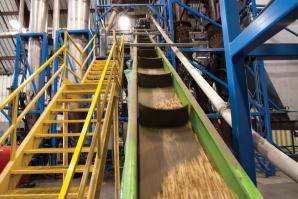In his first year as Sacramento’s mayor, Kevin Johnson focused public attention on a series of initiatives targeting the arts, education, the economy and public safety, which aim to bring together experts and residents to develop action plans to move Sacramento forward in its development as a well-rounded city.
Several weeks ago the mayor launched his most ambitious initiative yet: morphing our region into “an emerald valley … the greenest region in the greenest state.” It couldn’t have come at a more opportune time. For one thing, the administration in Washington has focused its economic recovery funds on energy. Our region recently received $220 million in stimulus funding for energy efficiency programs and green job training.
For another, news reports are detailing the disastrous oil spill in the Gulf of Mexico. With every story about this and other environmental mishaps, the pressure rightly grows to develop cleaner, sustainable energy sources.
The mayor says Sacramento can take a leading role in that effort. It means creating high-quality green jobs and career ladders, developing policies and practices that support existing green businesses, attracting new ventures and increasing the public’s “green IQ.” The result, Johnson says, will be a thriving regional economy.
Whether this is political hyperbole or visionary leadership, I agree with Johnson’s assessment of the region’s competitive advantages, including access to lawmakers and recent growth in the field.
In fact, business leaders have already seized opportunities. The Green Capital Alliance, a collective of local utilities, business interests, researchers and city officials has been working for the past three years to build the region’s green sector and attract investment in local projects.
The group has two core goals: making our clean-tech sector a defining feature of our economy, and making the Sacramento region a leader in sustainability. Our region already has 100 clean-tech companies contributing $750 million in revenue to the local economy.
More than half of California’s green buildings are in the Sacramento region.
We can point to other achievements that support Sacramento’s promise as a green center. For example, more than half of California’s green buildings are in the Sacramento region. We are ranked among the top 10 regions in the country for clean-tech job activity and fourth in the U.S. for electric-vehicle readiness.
Granted, Sacramento has competition. San Francisco, Oakland, Los Angeles and San Jose are attracting attention for a variety of green practices: rebates for solar installations, green standards for building construction and retrofitting of older buildings, green-collar job training for low-income residents, and partnerships with community colleges and technical schools.
Two factors will give Sacramento’s initiative an edge. One is the breadth and depth of talent in the mayor’s Green Initiative Taskforce: leaders from the business, nonprofit, labor, academic and government sectors.
Another is the comprehensive approach to the issue. Task force members are charged with developing and setting goals in five policy areas: energy, waste and recycling, water and nature, urban design and green building, and green and clean technology. The goal is to create a common vision and action plans for the next decade or more, essentially a road map to that “emerald valley.”
These efforts will be a welcome, necessary impetus to our
region’s progress toward green leadership and to the economic and
environmental rewards such leadership will bring.
Recommended For You

Mayoral Musings
'Strong Mayor' will make city more nimble, NBA matchmaking and soccer in Sac
It’s been quite a year for Sacramento Mayor Kevin Johnson, topped in most people’s minds by his stunning, come-from-behind effort to block the Maloof family from selling and relocating the Sacramento Kings. We sat down with him recently to discuss basketball and several other topics important to the Capital Region.

Green Gas Grows
Capital Region biofuels reek of potential
A 2009 report from Pike Research in Boulder, Colo., forecasts the combined biodiesel and ethanol markets will reach $247 billion in sales by 2020, up from just $76 billion in 2010, or about 12 percent annual growth.


